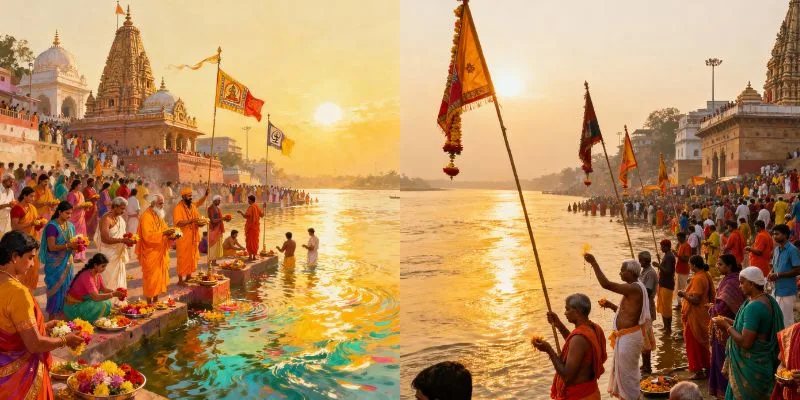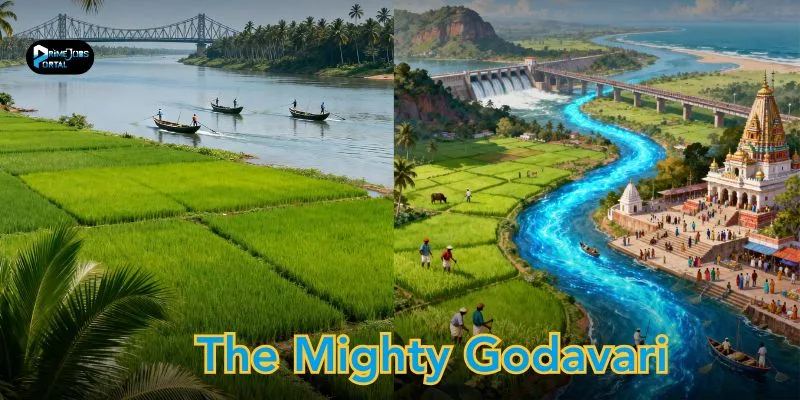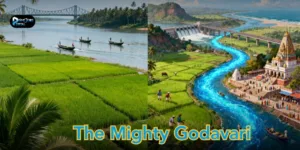Discover how the Godavari River shapes India’s landscape, drives economic growth, and enriches culture from source to sea. Engaging analysis and insights included.
Godavari River: The Lifeline of Peninsular India
- The Godavari River impact on India extends far beyond the flow of water it is a story of landscapes shaped, economies sustained, and cultures enriched.
- Rising in the sacred hills of Trimbakeshwar, Nashik, the Godavari’s 1,465 km journey across diverse terrain answers countless questions Indians have about agricultural prosperity, regional history, and spiritual traditions.
- Whether you’re seeking to understand how the river influences farming, local festivals, or urban development, this comprehensive guide will provide clarity and actionable insights.
The Journey: Source, Course & Endpoint
Origin and Geographical Route
- Begins at Trimbakeshwar, Nashik, Maharashtra, at 1,067 meters elevation.
- Flows eastward through Maharashtra, Telangana, Chhattisgarh, Odisha, Andhra Pradesh.
- Ends in the Bay of Bengal via two main mouths: Gautami and Vasishta Godavari.
- Covers a drainage area of over 312,812 sq. km, almost 10% of India’s land.
Key Tributaries and Landscapes
- Major tributaries: Pranhita, Indravati, Manjira, Sabari.
- Crosses plateaus, valleys, hills (Eastern Ghats), and a fertile delta near Rajahmundry.
- Basin supports black, red, laterite, and alluvial soil types.
Economic Contributions
- Agricultural Backbone
- Irrigates millions of hectares vital for rice, cotton, sugarcane, pulses.
- Provides water for both rainy and dry seasons, mitigating drought in Marathwada and boosting yield in Andhra Pradesh’s delta.
- Major dams (Sriram Sagar, Jayakwadi, Polavaram) enable controlled irrigation and reliable harvests.
- Power, Industry, Water Supply
- Hydroelectric projects (Sriram Sagar, Polavaram) generate electricity for surrounding states.
- Supplies drinking and industrial water for cities, factories, and rural settlements.
- Rural fisheries and local transport (inland navigation) enhance employment and rural incomes.
- Tourism and Festivals
- Draws spiritual tourism for Kumbh Mela, Pushkaram and ongoing pilgrimages.
- Generates income for local businesses, guides, hotels, and artisans.
- Economic losses can result from pollution, overextraction, and flooding
- tourism and fisheries especially at risk.
Ecological and Environmental Significance
- Biodiversity and Wildlife
- Home to wildlife sanctuaries like Tadoba and Pench National Parks, tiger reserves.
- Godavari delta supports mangroves, wetlands, tropical forests, unique flora and fauna.
- Environmental Challenges
- Prone to flooding, particularly in lower reaches and coastal areas.
- Pollution and water mismanagement impact soil fertility, fisheries, and rural health.
- Vulnerable communities face flood damage, waterborne diseases, and crop losses.

People and Culture: Godavari’s Living Legacy
- Spiritual and Religious Heritage
- Referred to as “Dakshina Ganga” (Southern Ganges); revered in Hindu scriptures.
- Banks lined with countless temples, ghats, pilgrimage sites.
- Hosts rituals, cremations, and river festivals Pushkaram draws millions every 12 years.
- Folk Traditions, Arts, and Stories
- Inspires music, dance, and literature in local languages.
- Regional cuisine, handicrafts, and everyday life shaped by river proximity.
- Societal Challenges and Adaptation
- Flood-prone informal settlements most exposed to disaster and disease, exacerbating inequality.
- Restoration efforts by NGOs, government address pollution, resource allocation, stakeholder engagement.
Landscape Transformation: From Plateaus to Delta
- Physical Geography
- Western basin: plateau, semi-arid, moderate crops.
- Eastern basin: Dandakaranya range, Eastern Ghats scenic valleys.
- Delta: lush, fertile, highly populated, rice basket of South India.
- Climate and Soil
- Monsoon-driven rainfall: peaks in Western Ghats, cyclonic storms boost rainfall in sub-basins.
- Soil types: alluvial (delta), black cotton (plateau), mixed and saline patches.
Actionable Insights and Practical Advice
- Farmers along the Godavari can tap government irrigation schemes and crop insurance for greater resilience.
- Residents should support local clean-up projects and water conservation to protect long-term health and ecology.
- Travelers can plan spiritual or ecological tours along famous ghats, dams, and sanctuaries for enriching experiences.
- Policymakers must address pollution, restore wetland areas, and enforce floodplain management for inclusive growth.
Conclusion: Godavari River Impact on India
The Godavari River’s impact on India is profound fueling agriculture, powering industry, inspiring culture, and binding millions in shared heritage. Its journey from Trimbakeshwar to the Bay of Bengal uplifts economies, sustains ecosystems, and shapes generations everywhere along its banks.








